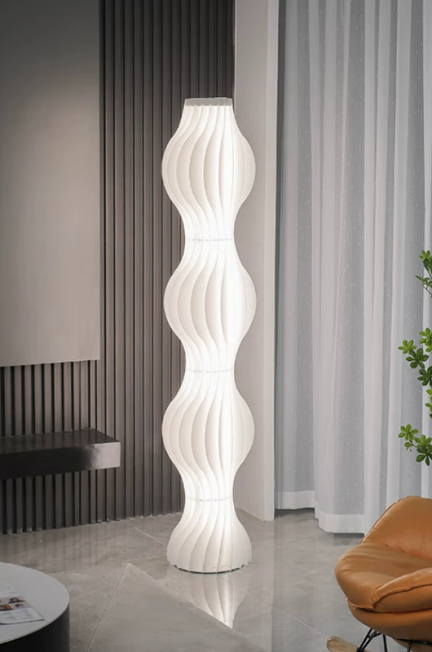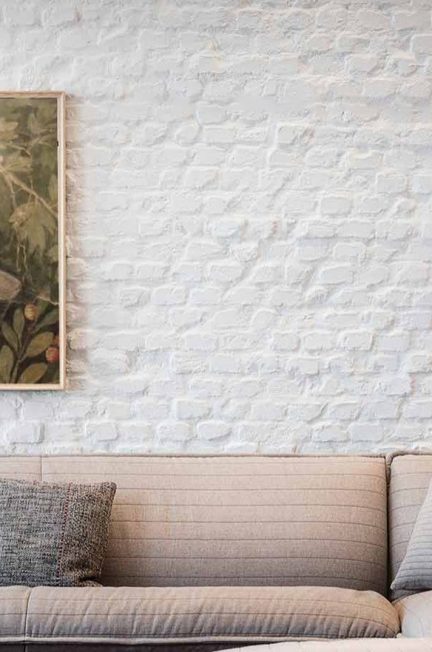Outdoor spaces play a crucial role in our lives, providing us with a place to relax, unwind, and connect with nature. Whether it’s a small balcony, a spacious backyard, or a rooftop terrace, these outdoor areas have the potential to become an extension of our living spaces. In this blog post, we will explore the various aspects of designing and planning your outdoor space, from assessing the area to choosing the right plants and incorporating focal points and water features. By following this step-by-step guide, you can create a beautiful and functional outdoor space that suits your style and needs.
Planning Your Outdoor Space: A Step-by-Step Guide
Before diving into the design process, it’s important to assess your outdoor space and understand its limitations and potential. Take note of the size, shape, and existing features of the area. Consider factors such as sunlight exposure, wind patterns, and privacy. This assessment will help you determine what is feasible and guide your design decisions.
Next, set goals for your outdoor space. What do you want to achieve with this area? Do you want it to be a peaceful retreat for relaxation or a vibrant space for entertaining guests? Understanding your goals will help you make informed decisions during the design process.
Once you have assessed your space and set goals, it’s time to create a layout and design plan. Consider how you want to use the space and divide it into different zones accordingly. For example, you may want to have a dining area, a lounging area, and a garden area. Sketch out different layouts and experiment with different arrangements until you find one that suits your needs.
Choosing the right materials and furniture is another crucial step in designing your outdoor space. Consider factors such as durability, maintenance requirements, and aesthetic appeal. Opt for materials that can withstand the elements and choose furniture that is comfortable and fits your design aesthetic.
Choosing the Right Plants for Your Garden Design
When it comes to choosing plants for your outdoor space, it’s important to consider your climate and soil conditions. Assess the amount of sunlight and shade your space receives throughout the day and choose plants that thrive in those conditions. Consider the type of soil you have and choose plants that are suitable for that soil type.
In addition to considering climate and soil conditions, it’s important to choose plants that fit your design aesthetic. Think about the overall style and theme you want to achieve in your outdoor space and choose plants that complement that vision. For example, if you want a tropical oasis, opt for lush, tropical plants. If you prefer a minimalist look, choose plants with clean lines and simple foliage.
Maintenance and care requirements are also important factors to consider when choosing plants. If you have a busy lifestyle or limited gardening experience, opt for low-maintenance plants that require minimal care. On the other hand, if you enjoy gardening and have the time and resources to dedicate to plant care, you can choose more high-maintenance plants.
Creating a Focal Point in Your Outdoor Space
A focal point is a key element in any outdoor space design as it draws the eye and creates visual interest. It can be anything from a sculpture or art installation to a water feature or a stunning plant arrangement. When choosing a focal point, consider the size and scale of your space as well as your personal style.
Incorporating art or sculpture is a great way to add personality and visual interest to your outdoor space. Choose pieces that reflect your personal taste and complement the overall design of your space. Sculptures can be placed on pedestals or integrated into garden beds for added impact.
Creating a seating area around the focal point is another way to enhance its presence in your outdoor space. Choose comfortable seating options such as lounge chairs or benches that allow you to relax and enjoy the view. Arrange the seating in a way that encourages conversation and interaction.
Adding Color and Texture to Your Garden Design
Color and texture are important elements in any garden design as they add visual interest and create a sense of depth. When choosing a color scheme for your outdoor space, consider the overall style and mood you want to achieve. Opt for colors that complement each other and create a harmonious look.
Incorporating different textures is another way to add visual interest to your outdoor space. Mix and match plants with different leaf shapes and textures to create a dynamic and layered look. Consider using materials such as stone, wood, or metal to add texture to hardscaping elements.
Plants and flowers are a great way to add color to your garden design. Choose plants with vibrant blooms that complement your color scheme. Consider using annuals for seasonal pops of color or perennials for long-lasting beauty.
Incorporating Water Features into Your Outdoor Space
Water features can add a sense of tranquility and serenity to your outdoor space. When choosing a water feature, consider the size and scale of your space as well as your personal style. Options range from small fountains or birdbaths to larger ponds or waterfalls.
Incorporating water into your design plan can be done in various ways. You can create a central water feature that becomes the focal point of your outdoor space, or you can integrate smaller water features throughout the area. Consider how the sound of running water will enhance the ambiance of your space.
Maintenance and care requirements should also be taken into consideration when choosing a water feature. Some features may require regular cleaning and maintenance, while others may be more low-maintenance. Choose a water feature that fits your lifestyle and maintenance capabilities.
Maximizing Space with Vertical Garden Design
Vertical gardening is a great way to maximize space in small outdoor areas. It involves growing plants vertically on walls, fences, or trellises, allowing you to create a lush and green space even in limited areas. When choosing plants for vertical gardening, consider their growth habits and choose ones that will thrive in a vertical environment.
Creating a vertical garden design plan is essential to ensure that your plants have enough space to grow and thrive. Consider factors such as sunlight exposure, water drainage, and the weight of the plants. Choose a variety of plants with different colors and textures to create visual interest.
Incorporating vertical gardening into your overall design can be done in various ways. You can create a living wall as a focal point or use vertical gardening to divide different zones in your outdoor space. Consider using hanging baskets or planters to add depth and dimension to your vertical garden.
Utilizing Lighting to Enhance Your Outdoor Space
Lighting is an important element in any outdoor space design as it creates ambiance and enhances the overall atmosphere. When choosing lighting for your outdoor space, consider factors such as the size and scale of your space, the desired mood, and the functionality of the area.
Incorporating lighting into your design plan can be done in various ways. You can use string lights or lanterns to create a cozy and intimate atmosphere, or you can use spotlights or floodlights to highlight specific features or areas. Consider using different types of lighting fixtures to create layers of light.
Creating a cozy and inviting atmosphere with lighting involves strategic placement of lights. Consider illuminating pathways and stairs for safety and visibility. Use uplighting or downlighting to highlight trees or architectural features. Consider using dimmers or timers to control the intensity and timing of the lights.
Creating a Cozy Outdoor Living Area
Creating a cozy outdoor living area is all about choosing comfortable furniture and adding elements that make the space inviting. When choosing furniture for your outdoor living area, opt for pieces that are durable, weather-resistant, and comfortable. Consider materials such as wicker, teak, or aluminum that can withstand the elements.
Incorporating outdoor rugs and pillows is another way to add comfort and coziness to your outdoor living area. Choose rugs and pillows that are made from weather-resistant materials and opt for colors and patterns that complement your overall design.
Creating a space for entertaining is an important aspect of designing a cozy outdoor living area. Consider adding a dining table and chairs for al fresco meals or a bar area for drinks and cocktails. Incorporate elements such as a grill or a fire pit to enhance the functionality of the space.
Designing a Low-Maintenance Garden
Designing a low-maintenance garden is ideal for those who have limited time or gardening experience. When choosing plants for a low-maintenance garden, opt for ones that are drought-tolerant, disease-resistant, and require minimal pruning or fertilizing. Consider using native plants that are adapted to your climate and soil conditions.
Incorporating hardscaping elements such as stone pathways or gravel beds can help reduce maintenance requirements in your garden. These elements require minimal upkeep and can add structure and visual interest to your outdoor space.
Creating a design plan that requires minimal upkeep involves strategic placement of plants and features. Consider grouping plants with similar water and maintenance requirements together. Use mulch or ground covers to suppress weeds and retain moisture in the soil.
Sustainable Garden Design: Eco-Friendly Tips for Your Outdoor Space
Designing an eco-friendly outdoor space is not only beneficial for the environment but also for your own well-being. When choosing plants for your sustainable garden, opt for native species that are adapted to your climate and require less water and maintenance. Native plants also provide habitat for local wildlife.
Incorporating composting and recycling into your outdoor space is another way to make it more sustainable. Set up a compost bin to recycle organic waste such as kitchen scraps and yard trimmings. Use recycled materials such as reclaimed wood or recycled plastic for hardscaping elements.
Using eco-friendly materials is another important aspect of sustainable garden design. Opt for materials that are locally sourced and have a low environmental impact. Consider using permeable paving materials that allow rainwater to infiltrate the soil and reduce runoff.
Outdoor spaces are an essential part of our lives, providing us with a place to relax, connect with nature, and entertain guests. By following this step-by-step guide, you can create a beautiful and functional outdoor space that suits your style and needs. From assessing your space to choosing the right plants and incorporating focal points and water features, there are endless possibilities for designing your own outdoor oasis. So, start planning and designing your outdoor space today and enjoy the benefits of a well-designed outdoor area.

